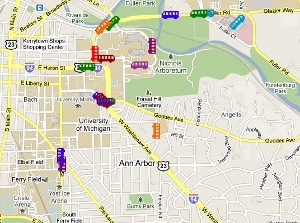When it comes to getting from point A to point B, the increasingly innovative nature of mobility has made mass transit a special area of interest for municipalities as they contemplate how to best allocate resources to attract and retain millennials.
My generation has recently been heralded as the mass transit generation, and although the verdict is still out, studies show that at the very least we’re more interested in using multiple means of travel, less interested in obtaining a driver’s license, and altogether eager to take advantage of developing transportation technology to ease and enhance our commute.
Dynamic Transit
Millennials are more enthusiastic than their parents about the mass transit option, especially when mass transit proves a more efficient method of travel than driving to work. Consider: 40 percent of millennials state that they use mass transit as an opportunity to work on their way to work. Although frequent stops or even delays may cause an individual to budget more time for a commute, 45 minutes spent catching up on e-mails or preparing an agenda for the day may seem a better alternative to 30 minutes spent behind the wheel of a car. Furthermore, young professionals tend to see public transportation as a social experience. As they flock to urban centers, the usage of public transit gives millennials an opportunity to engage in their new community.
Mass transit also gives my generation alternatives to owning a vehicle, a responsibility that may seem altogether unnecessary and unfavorable for individuals living near urban hubs. Several expenses go into possessing a car: the actual cost of the vehicle, gas, insurance, vehicle maintenance, parking, and tolls. Coupled with escalating urban rent and the absurd amount of student loan debt that millennials lug around, car expenses impose a large and unnecessary financial burden on those for whom mass transit is an alternative option.
Apps and Accessibility
For previous generations, owning a vehicle was the only way in which travelers could ensure spontaneous mobility. Adherence to complicated train schedules, bus schedules, and closing times essentially meant that any trip undertaken had to occur within a certain predetermined time frame that one missed bus or train could completely shatter.
The advent of new transportation technology by way of apps has significantly impacted the manner in which we can get from point A to point B. Consider Transit App (or HopStop before it was acquired by Apple), which will plan out an entire trip between different modes of transportation in seconds, complete with real-time train and bus schedules. Technology like this makes an entire network of mass transit more approachable to millennials seeking on-demand mobility simply by downloading an app.
The Reality
Public transportation is a concept near and dear to my heart. Throughout my first experience living in Washington, D.C., I encountered all the trials and tribulations that came with owning and operating a vehicle in the city. Between the narrow roads, the parking situation, how much I paid for the parking situation, the toll roads, and the traffic, I can attest that using a car in the city was financially draining and mentally exhausting. When I moved into the city for the second time, I was thrilled that my office was accessible by metro and left me no need to use a vehicle.
That being said, although the D.C. metro system got me where I needed to go and allowed me to dodge the pitfalls of operating a car in the city, it certainly wasn’t the epitome of technological efficiency as portrayed in many of the articles cited above about public transit systems. The Washington Post actually ran a story this week about the D.C. metro system and its shortcomings, based on survey responses of D.C.-based millennials. They quoted one respondent as saying “Our Metro seems to catch on fire or derail more often than it runs on time,” and some of the notable descriptions of the system included “absolute worst in the world” and “death trap.”
Therefore, I’m not surprised that mass transit has yet to surpass cars as the premier way for my generation to get around in D.C., or nationally for that matter. Millennials may be increasingly open to mass transit, but the fact that several city-based transit systems have yet to evolve past 20th century obstacles leaves us to choose between what the Washington Post terms the lesser of two evils. For 84.5 percent of today’s 18-34 age group, that lesser evil is still driving.
Yet, as municipalities begin to reevaluate the manner in which they allocate their transportation resources, anything is possible. Millennials will ultimately flock to cities that can provide freedom of mobility in a cost-effective, safe, and efficient fashion. Therefore, municipalities have everything to gain from investing in high-quality, innovative public transit. Michigan’s willingness to embrace a competitive 21st century transportation infrastructure will set it apart from other states, and work towards attracting and retaining an entire generation of young professionals.

